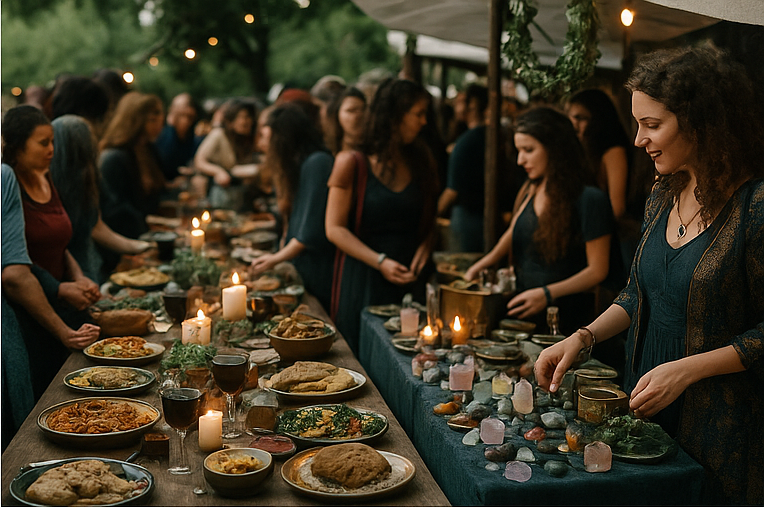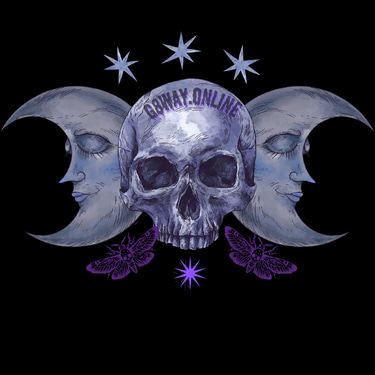

I’m not big on holidays. Most of them feel like overpriced distractions wrapped in glitter and guilt—buy this, cook that, show up, smile, and shut up. I don’t light candles for birthdays. I don’t toast to the New Year. Meaning’s been wrung out of most things, and these days, I don’t hand it out lightly. But *some* nights still hold weight. Hexenacht—Witches’ Night—is one of them. And I’ll tell you why.
According to legend, April 30th is when witches were believed to gather atop Germany’s Mount Brocken to dance with the devil and raise hell before spring rolled in. It's folklore meets fire. And in some parts of Europe, they’ve run wild with it—bonfires, costumes, parties that smell like a Renaissance Faire got drunk on pagan cosplay. Fun on the surface, sure. But beneath that? A bloodstained legacy of fear, ignorance, and mass murder dressed up as protection.
The Satanic Temple didn’t miss the deeper note here. They reframed Hexenacht not as a celebration, but a *memorial*. A solemn holiday. A night to honor the countless lives stolen by superstition and pseudoscience. Witches, heretics, midwives, outcasts, mouthy women, queer folks, herbalists—people who dared to live outside the lines and paid with their lives. And not just during the medieval witch trials. Let’s talk modern witch hunts—like the Satanic Panic of the ‘80s and ‘90s, when innocent people were locked up and publicly crucified on a cross made of lies, fueled by pearl-clutching moral crusaders and media hysteria.
Hexennacht is for them too. This isn’t about theatrics or edgy aesthetics. It’s about remembrance. Real, gut-level, unsanitized remembrance. It’s about the victims of cultural paranoia, religious fervor, and the kind of ignorance that sets fire to truth and calls it divine justice.
And here’s the kicker—this all falls right before May Day, a celebration of spring, rebirth, and fertility. “Out with the old, in with the new,” they say. "April showers brings May flowers", too. And those drowned, hanged, and burned? What if all that new growth is rooted in unhealed wounds beneath unmarked graves? You can’t skip straight to the dancing if you never bothered to bury the dead right. Reverent displays and dutiful homage are in order.
Remember, Walpurgis Night (aka Hexennacht) marks a powerful threshold between seasons, shadow and light, fear and festivity. Deeply rooted in ancient pagan traditions, it is a night long associated with witchcraft, wild revelry, and the thin veil between the material and spirit realms. Yet today, it offers a beautiful opportunity to reclaim and transform that legacy—not just as a spring celebration, but as a day-long immersive experience that honors both the Earth’s renewal and the memory of those wrongfully persecuted under the guise of superstition.
Imagine a modern-day Hexennacht, beginning at sunrise with vibrant all-day festivities that intertwine joy, learning, and reverence. A grand parade would wind through the community, led by sacred dancers in flowing garments, their movements echoing the rhythms of ancient fertility rites. The air would hum with drumming circles, chants, and songs calling forth the spirit of renewal. Local artisans and mystics could offer workshops on crystal healing, herbal crafts, ancestral storytelling, and protective sigil-making, encouraging deeper connections with the Earth and one's lineage.
As the sun sets, the mood deepens. A communal feast would bring everyone together—complete with seasonal dishes, games rooted in folklore, and storytelling beneath lantern-lit trees. The night would culminate in a ceremonial pyre, lit with reverence to honor the spirits of those who suffered during the witch trials and similar persecutions. The fire would be a symbol of remembrance and transformation: a way to mourn injustice, offer collective healing, and promise to carry forward a wiser, more compassionate path. In this fusion of festivity and remembrance, Hexennacht becomes a portal—strictly meant for the sincere and devout empaths who respectively acknowledge the sufferings of 'the accused' centuries ago.
So, it's not all about partying like a hippie. I’m not pushing a holiday either. Shit, I’m barely interested in the calendar. But Hexenacht deserves more than bonfires and costumes. It deserves reverence. It deserves rage. It deserves to be a night when we name what was done, who it was done to, and why we can’t afford to forget it. Because forgetting is how it happens again. So, if you do *anything* on April 30th, let it be this: Remember. Loudly or quietly... Just * remember. *
Not because tradition says so, but because it's the right thing to do.
